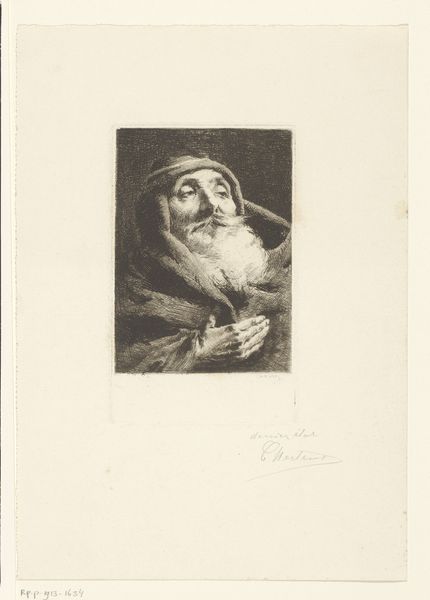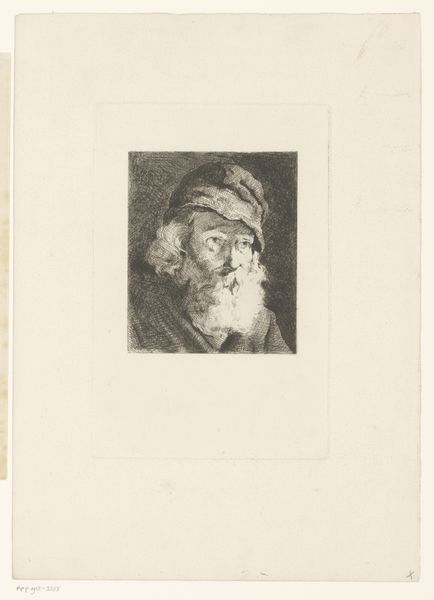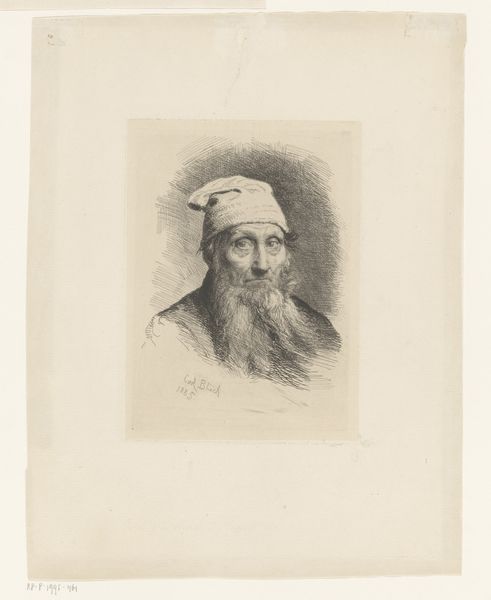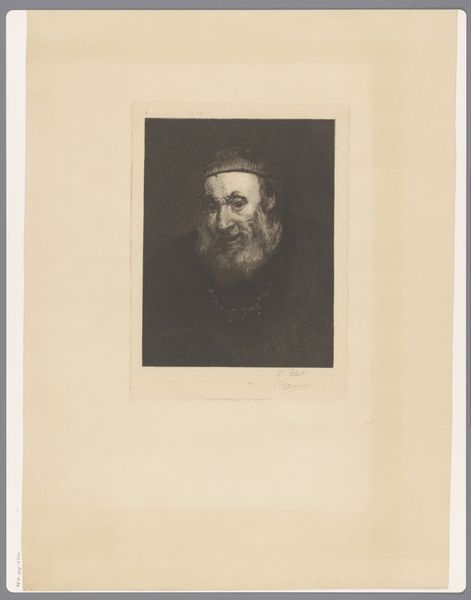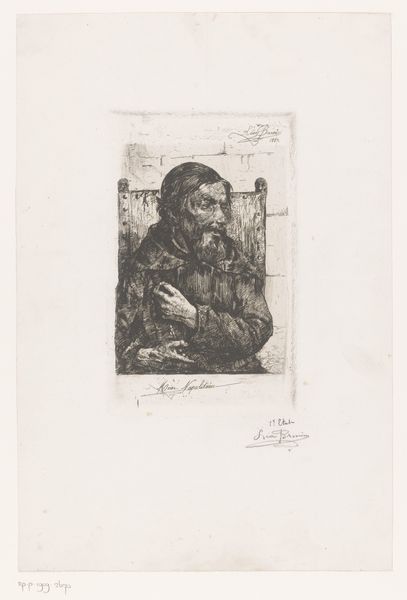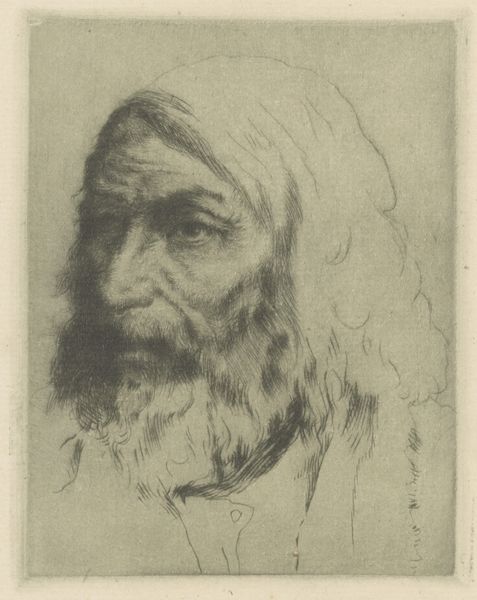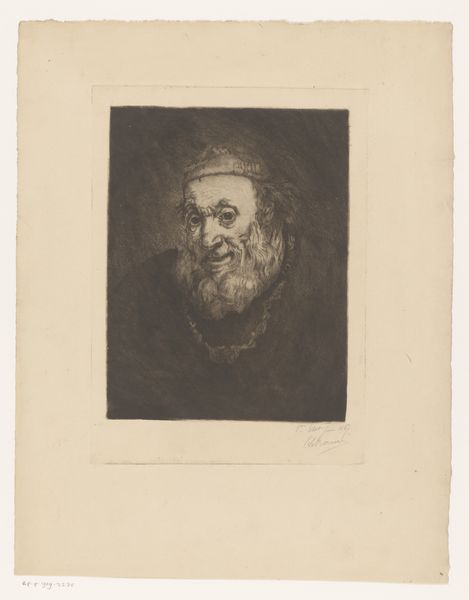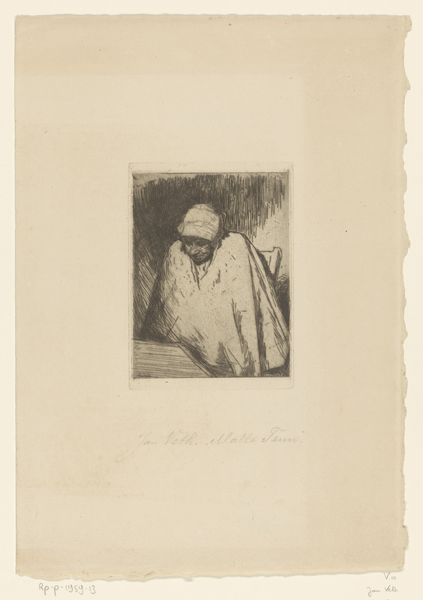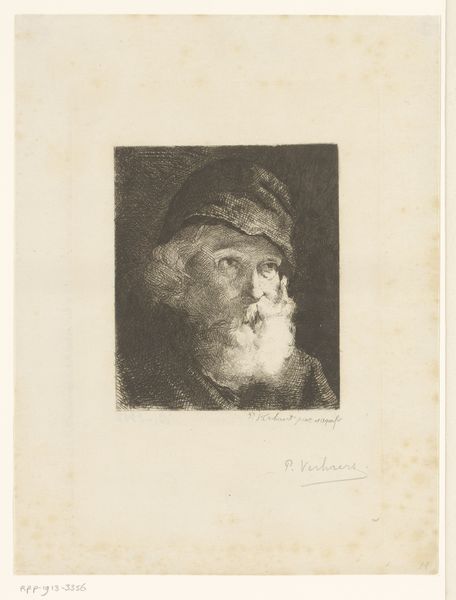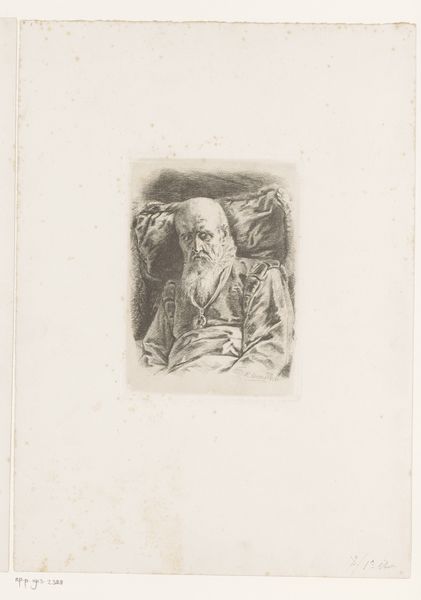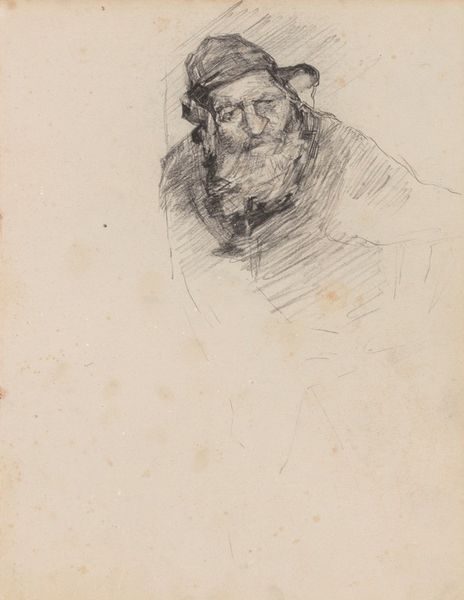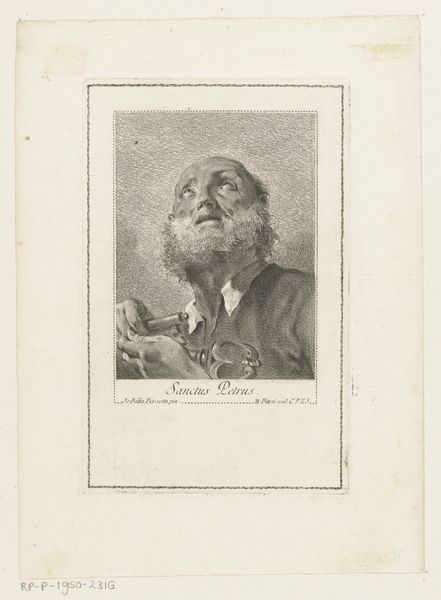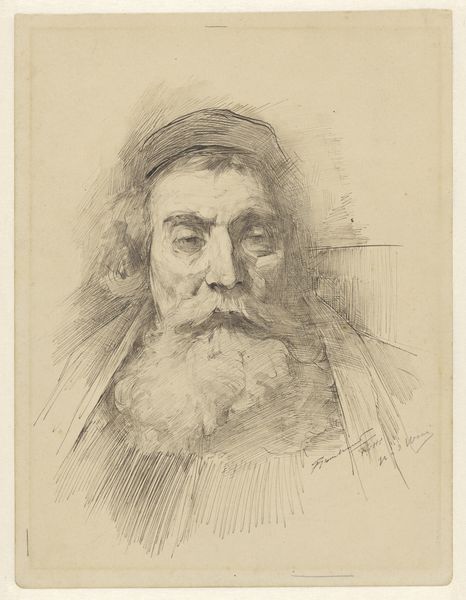
print, etching, engraving
#
portrait
# print
#
etching
#
engraving
#
realism
Dimensions: height 147 mm, width 90 mm
Copyright: Rijks Museum: Open Domain
Curator: The pensive visage you see before you is titled "Farizeeër", made sometime between 1875 and 1913 by Charles Mertens. The print showcases remarkable detail, executed in etching and engraving. Editor: It certainly looks meticulously crafted. There’s a gravitas in his expression that the technique really brings forward. But it strikes me as small – almost intimate in scale, wouldn't you agree? Curator: Indeed. The materiality itself points to its role in the art market and the rise of printmaking as a readily available form of art for wider audiences, breaking the established idea that ‘art’ needed to be large scale painting, often with themes celebrating wealth or aristocracy. Consider how easily an etching can be replicated versus oil on canvas. This changed the way art was circulated. Editor: And considering the period, it coincides with massive social and religious upheavals. "Farizeeër"—Pharisee—directly challenges religious authority and established structures. Was Mertens commenting on the waning power of religion within society at that time, perhaps reflecting contemporary debates? Curator: Precisely. This title isn't accidental. It invites viewers to consider the relationship between religious image-making and broader cultural shifts occurring across Europe. Beyond that, printmaking itself offered artists autonomy over reproduction and distribution – giving greater access, outside formal art structures. Editor: It's intriguing how Mertens chooses a printing medium rather than the traditional painting when taking on the "establishment.” It could indicate an understanding of the art world's developing democratisation and the function of the artist outside of sanctioned channels, such as Royal Academies, possibly offering critiques more easily spread throughout society, since, as you have noted, prints have a broader reach.. Curator: Absolutely. Through this etching and engraving, Mertens is not just creating a portrait, but he’s participating in the dialogue concerning what constitutes art, who can afford art, and how messages circulate, especially as it impacts the status quo. Editor: So, it’s more than a study of one individual, but about what printmaking could mean at the time… The means by which those statements are accessed.. That’s something that one easily overlooks when we have digital mediums! Curator: Precisely! Considering the historical era, we’re gaining not only an understanding of one individual, but society itself. Editor: Well, it has offered a good reminder of how technical processes can also be tools for artistic and social progression.
Comments
No comments
Be the first to comment and join the conversation on the ultimate creative platform.
